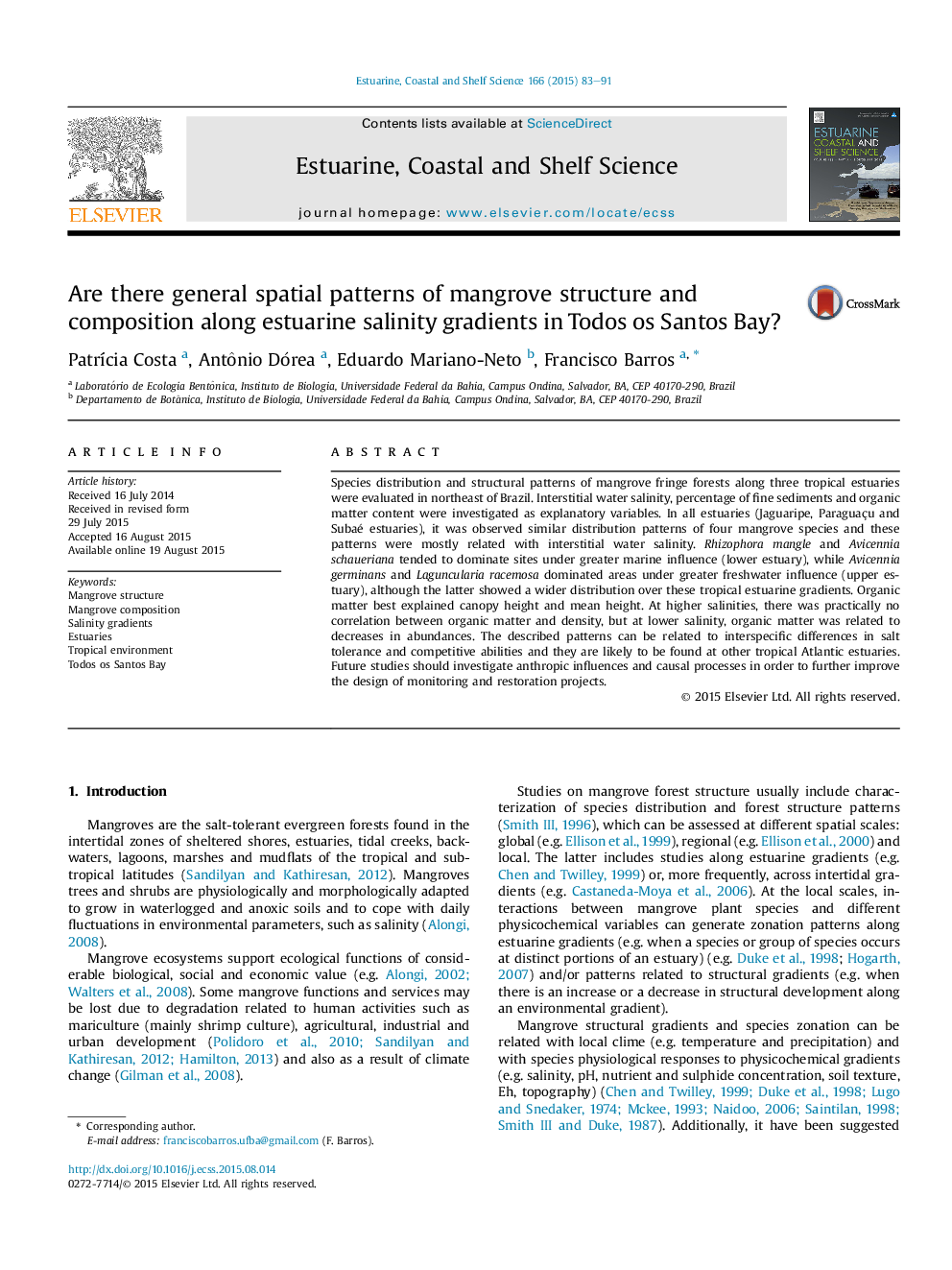| Article ID | Journal | Published Year | Pages | File Type |
|---|---|---|---|---|
| 4539366 | Estuarine, Coastal and Shelf Science | 2015 | 9 Pages |
•Rhizophora mangle and Avicennia schaueriana dominate the lower estuary.•Avicennia germinans and Laguncularia racemosa dominated upper estuary.•At lower salinities, organic matter was related to decreases in forest density.•The described patterns are likely to be found at other tropical estuaries.
Species distribution and structural patterns of mangrove fringe forests along three tropical estuaries were evaluated in northeast of Brazil. Interstitial water salinity, percentage of fine sediments and organic matter content were investigated as explanatory variables. In all estuaries (Jaguaripe, Paraguaçu and Subaé estuaries), it was observed similar distribution patterns of four mangrove species and these patterns were mostly related with interstitial water salinity. Rhizophora mangle and Avicennia schaueriana tended to dominate sites under greater marine influence (lower estuary), while Avicennia germinans and Laguncularia racemosa dominated areas under greater freshwater influence (upper estuary), although the latter showed a wider distribution over these tropical estuarine gradients. Organic matter best explained canopy height and mean height. At higher salinities, there was practically no correlation between organic matter and density, but at lower salinity, organic matter was related to decreases in abundances. The described patterns can be related to interspecific differences in salt tolerance and competitive abilities and they are likely to be found at other tropical Atlantic estuaries. Future studies should investigate anthropic influences and causal processes in order to further improve the design of monitoring and restoration projects.
